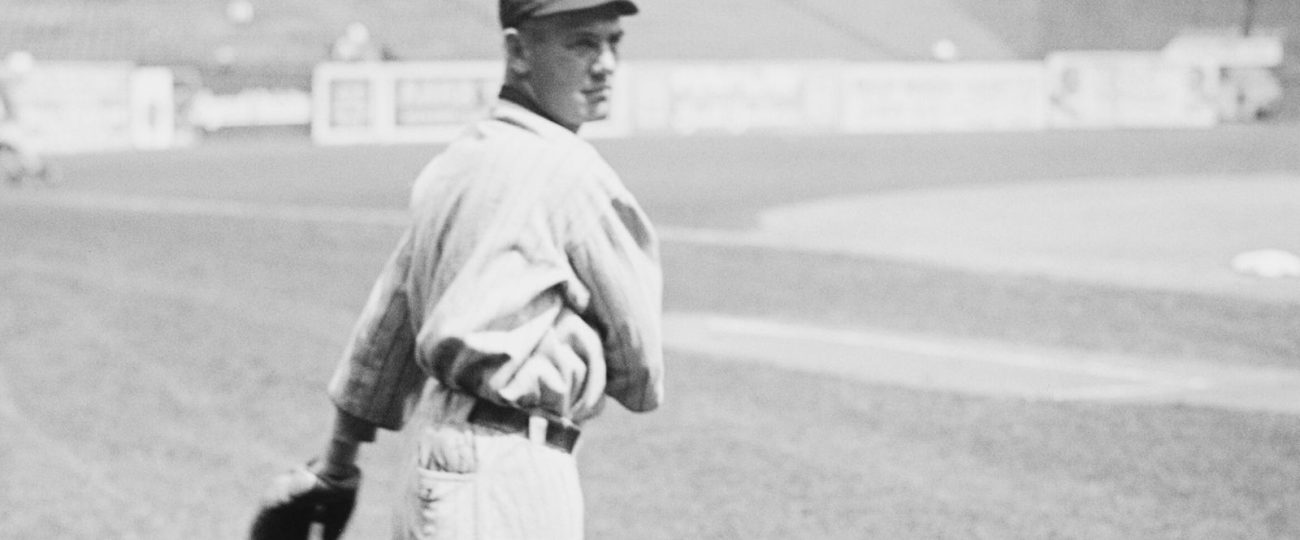What Happened On August 16th?
On August 16, 1920, a baseball game at the Polo Grounds in New York City changed Major League Baseball forever. Ray Chapman, the Cleveland Indians’ shortstop, stepped up to the plate in the fifth inning. Carl Mays, a pitcher for the Yankees, threw a pitch that struck Chapman in the head, leading to a fatal injury. Chapman collapsed immediately and never regained consciousness.
Batters at that time did not wear helmets, leaving them exposed to serious injury. Pitchers often tampered with the ball, making it dirty and hard to see. Chapman, likely expecting an inside pitch, did not react in time as the ball came toward him. The ball hit his skull with such force that many in the crowd thought it had struck his bat. When Chapman fell to the ground, everyone realized something was terribly wrong.
Chapman lay on the field, bleeding from his ear, while his teammates and a doctor rushed to help him. The game stopped as they tried to revive him, but his condition appeared dire. They helped him to his feet briefly, but he collapsed again. They carried him off the field on a stretcher and rushed him to the hospital. Despite emergency surgery, Chapman died at 4:40 a.m. the next day, August 17, 1920. He remains the only player in Major League Baseball history to die directly from an injury during a game.
Chapman’s death shocked the baseball world and devastated his teammates and fans. At 29, Chapman had become a popular and respected player, known for his quick reflexes and strong defensive skills. He had joined the Cleveland Indians in 1912 and quickly became a fan favorite. His untimely death sparked immediate discussions about player safety, leading to important changes in the game.
As they carried Chapman off the field, his teammates in the dugout sat in stunned silence. Some quietly wept, sensing something was seriously wrong. The usual chatter in the dugout ceased, replaced by a heavy sense of dread.
Carl Mays, the pitcher who threw the pitch that hit Chapman, carried the burden of the incident for the rest of his life. Mays had a reputation for pitching aggressively, often throwing inside to batters. However, Chapman’s death cast a dark shadow over Mays, and many in the baseball community blamed him for the tragedy. Although Mays continued his career in the Major Leagues, he became an outcast among players and fans. He later argued that the incident kept him out of the Hall of Fame, a belief shared by some baseball historians.
Chapman’s death prompted immediate changes in baseball. The league banned pitches that involved tampering with the ball. These changes aimed to reduce the risk of injury and ensure that batters could see the ball clearly. The new rules required that balls be replaced regularly during games to keep them clean and visible. Although batting helmets did not become mandatory until decades later, Chapman’s death started the conversations that eventually led to their adoption.
Officials discarded the ball that struck Chapman, which would be unthinkable today for an event of such significance. They treated it as they would any other ball, reflecting the shock and confusion following the incident. Today, that ball would be seen as an important piece of baseball history, but in 1920, it was just another ball.
Chapman’s death had a profound impact on the Cleveland Indians. The team, which had been strong contenders throughout the 1920 season, rallied around the loss of their teammate. They went on to win the American League pennant and captured their first World Series title. The players dedicated their victory to Chapman by wearing black arm bands, who had played a crucial role in their success. His absence brought the team closer together, as they drew strength from his memory.
Kathleen Daly Chapman, Ray’s widow, faced overwhelming grief after her husband’s death. The baseball community and others offered her immense support. Despite her sorrow, Kathleen donated the $7,000 she received from the league’s insurance policy to various charities. Although she later remarried, Kathleen carried Ray’s memory with her throughout her life. She never attended another baseball game, unable to bear the reminders of both her greatest joy and deepest sorrow.
The New York Yankees, deeply affected by Chapman’s death, held a memorial service for him before their next home game. The Yankees players wore black armbands for the rest of the season as a mark of respect. This tribute set an early example in Major League Baseball for honoring players who had passed away, showing the deep sense of loss felt across the league.
Chapman’s death left a lasting impact on Major League Baseball. His funeral in Cleveland drew thousands of mourners, including his teammates, who served as pallbearers. The team retired his jersey number, and players wore black armbands in his memory for years. The tragedy of his death reminded everyone of the dangers in the game, prompting ongoing efforts to improve player safety.





